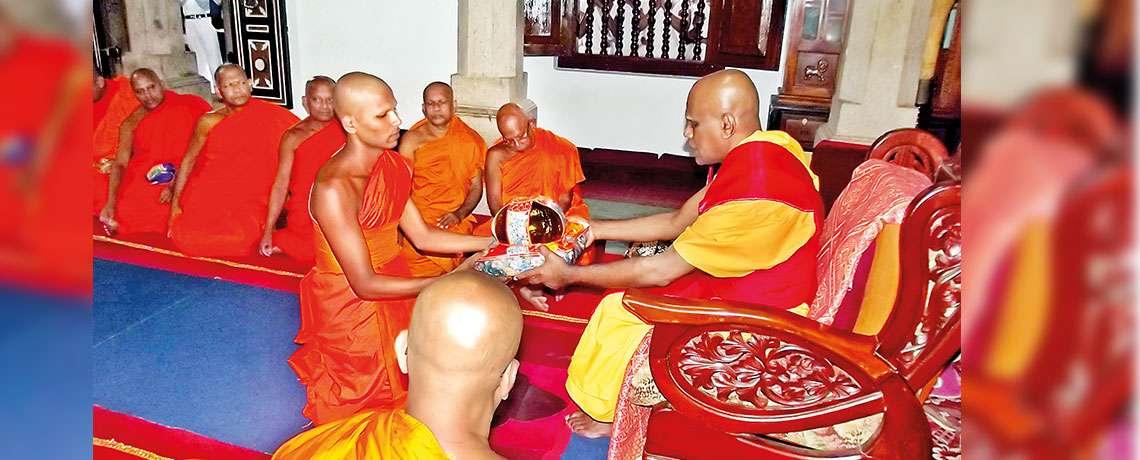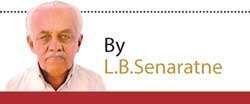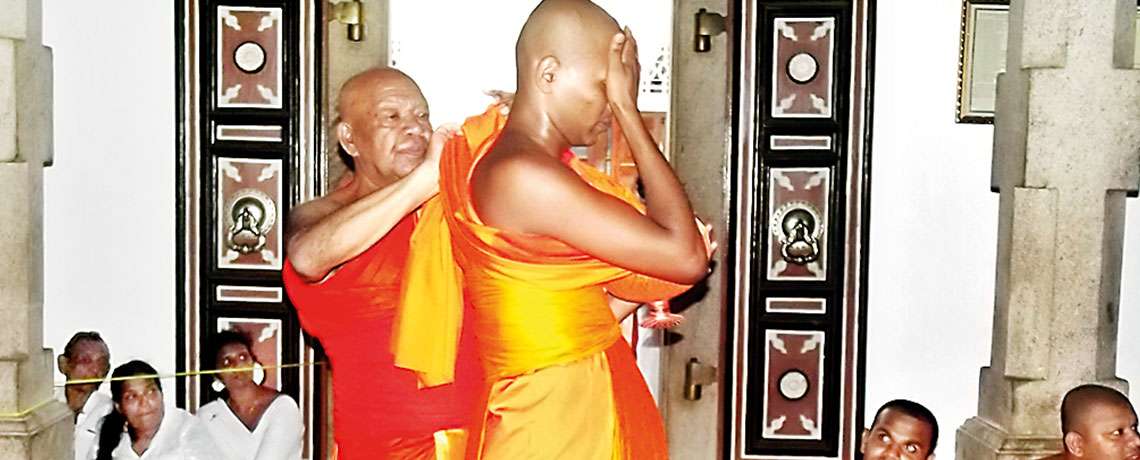11 Jun 2018 - {{hitsCtrl.values.hits}}

 Upasampada or higher ordination ceremonies haven’t changed over the years and still remain as they were conducted in 1773. ‘The Graphic’ of January 1576 describes a “A Buddhist Ordination of Ceylon”.
Upasampada or higher ordination ceremonies haven’t changed over the years and still remain as they were conducted in 1773. ‘The Graphic’ of January 1576 describes a “A Buddhist Ordination of Ceylon”.
An account on this ordination written by a British reporter states, “A celebration witnessed by a few, and a few Europeans in Ceylon, was held according to some customs on the full moon day of Vesak. Vesak is considered as the day on which Gautama Buddha attained Nirvana (enlightenment). Then it goes on to describe the preparations and the ceremonies themselves. The writer says “Candidates for higher ordination are bought on elephants to the place where the ceremony is to be held. They are dressed in their best attire and are accompanied by their friends. They are proceeded by musicians and dancers. On arrival at the Chapter House (Part of a monastery) each candidate is received by his tutor and is presented to the assembled Chapter. The chapter is presided by the Chief Priest. The proceedings are solemn and impressive and without variation from the ceremonies held 2000 years ago. He continues to describe this “The Chapter House is an oblong hall with rows of pillars forming an inner space and aisles. At the top of this inner space sat the president of the Chapter. On either side of the candidate sat the elder priest and down the sides sat the other priests numbering between thirty and forty. The President sat on a cushion while the other priests sat on mats. They all sat cross-legged”.
Before an individual can reach this status of Higher Ordination the Samanera performs the essential rites within the temple where was ordained

Yellow robes
He continues, “The candidate kneels down before the priest and receives from him the yellow robes of a priest. He then asks to be officially dressed to renounce this world. He is assisted by his tutor to don the yellow robes of a celibate priest, and to say, “ In wisdom I put on the robes as a protection against cold, heat, gadflies and mosquitoes, wind and the sun, the touch of serpents and to cover a naked body”.
The writer says he returned to the presence of the Chapter and examined how these candidates take usual vows to gear themselves for the duties and a life of a priest. He says that the place was furnished by the Government Agent J.F.Dickson of the Ceylon Civil Service. The writer says that it could be added that many corrupt practices and innovations have been introduced by the Northern Buddhists in Ceylon. Ths form of religion so closely resembles Christianity, but retains almost its pristine purity. It’s recorded that a Roman Catholic priest had translated the procedural system of Upasampada and had it delivered to the Holiness the Pope to adopt the same system for ordination. There is no record of this being done. But the writer refers to both the “The Graphic” and “Harper Weekly” of February 1876 noted that Christianity could have incorporated some of these aspects for their ceremonies. It is also felt that some of them could be incorporated during ceremonies in Rome. Upasampada was conducted during Buddha’s time and the Buddha himself conducted the rites of conferring Upasampada. This is known as “Ehi Bhikkhu ‘ Higher Ordination. The present Upasampada is the eighth form out of these rites. It is known as “Gnatrtichatthasaupa Upasampada”. Higher ordination can be conducted in two areas: Jala Seemawa ‘ or in an area surrounded by water or Badda Seemawa which is a demarcated Sacred area. In both the two Maha Viharas these rites are conducted in a marked area.
Higher ordination can be conducted in two areas: Jala Seemawa ‘ or in an area surrounded by water or Badda Seemawa which is a demarcated Sacred area
Upasampada
Sri Lanka possessed Upasampada rites which were even taken to Thailand (earlier Siam ). They were named Lankawamsarites. But it waned away and it was left to Sangharaja Asarana Sarana Weliwita, with the blessings of King Kirthi Sri Rajasinghe to obtain the rites back from Thailand and bring it to Sri Lanka in 1753. The ceremony was held at Malwatte Maha Viaharaya in a sacred area.
Upasampada is looked forward to by all monks who enter the following of Gautama Buddha. Before an individual can reach this status of Higher Ordination the Samanera performs the essential rites within the temple where was ordained. During this period he also visits a Pirivena, where he was taught the doctrine preached by Gautama Buddha. Sometimes it so happens that if there is no pirivena, an elder monk who has received High Ordination can teach the monk the precepts and rites of the ‘Buddha Sasana’.
In the morning hours of the day of Upasampada, the elders at the Maha Viharas tests the Samanera regarding the essentials of the doctrine of Gautama Buddha. This is to check whether he could preach the Dhamma to the people.
23 Dec 2024 7 minute ago
23 Dec 2024 16 minute ago
23 Dec 2024 16 minute ago
23 Dec 2024 2 hours ago
23 Dec 2024 3 hours ago